 |
| (Click image to enlarge) |
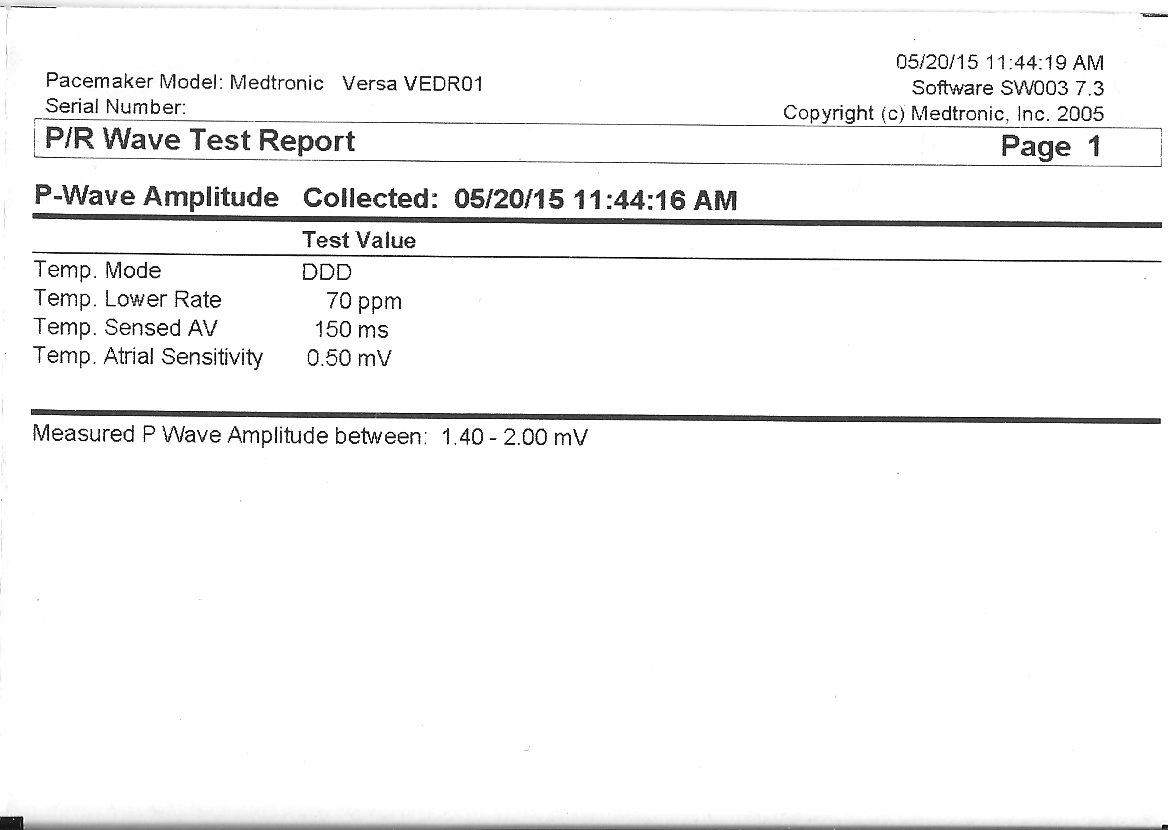 |
| (Click image to enlarge) |
Likewise, her Cardiac Compass plot of the duration of atrial fibrillation each day showed the following:
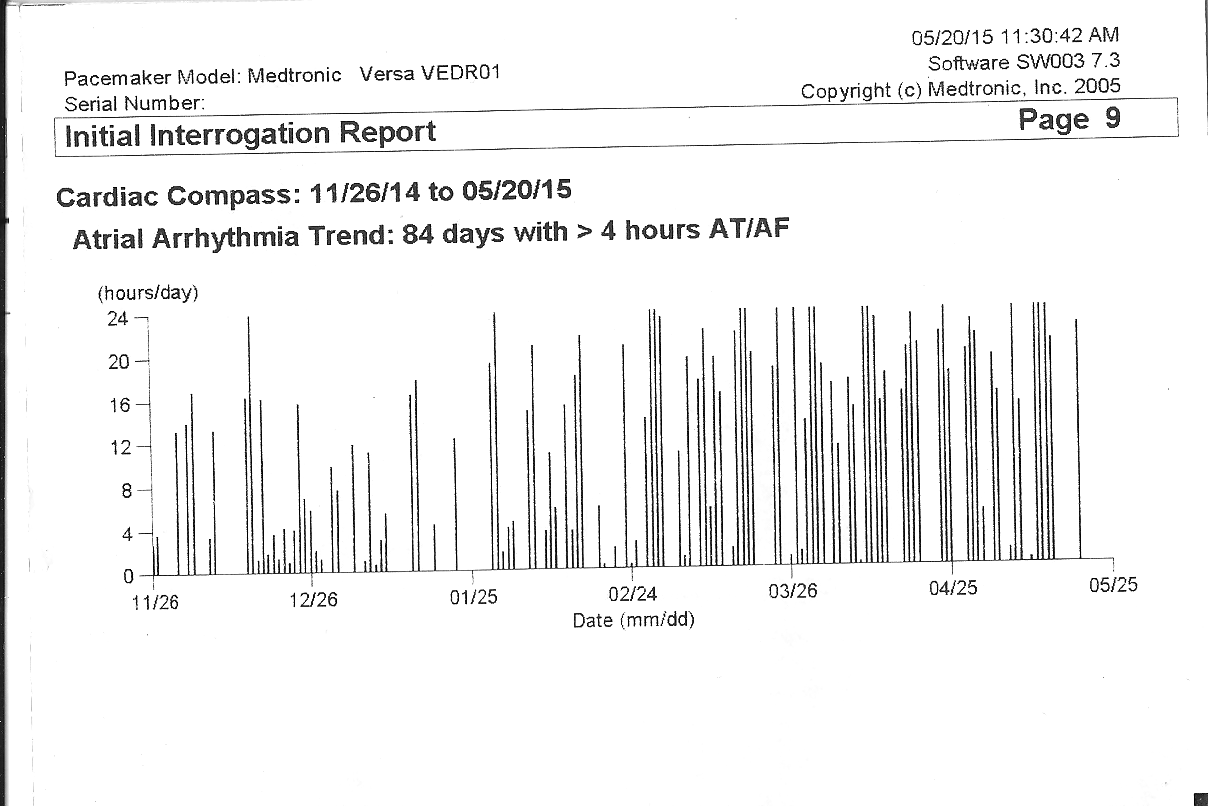 |
| (Click image to enlarge) |
Upon seeing these data, it was felt the patient may be undersensing her fibrillatory P waves (formally known as F waves). To improve her pacemaker's atrial sensitivity, the sensitivity threshold was changed from 0.5 mV (her initial setting) to a more sensitive setting of 0.25 mV. Here is how the device responded to this change in sensitivity:
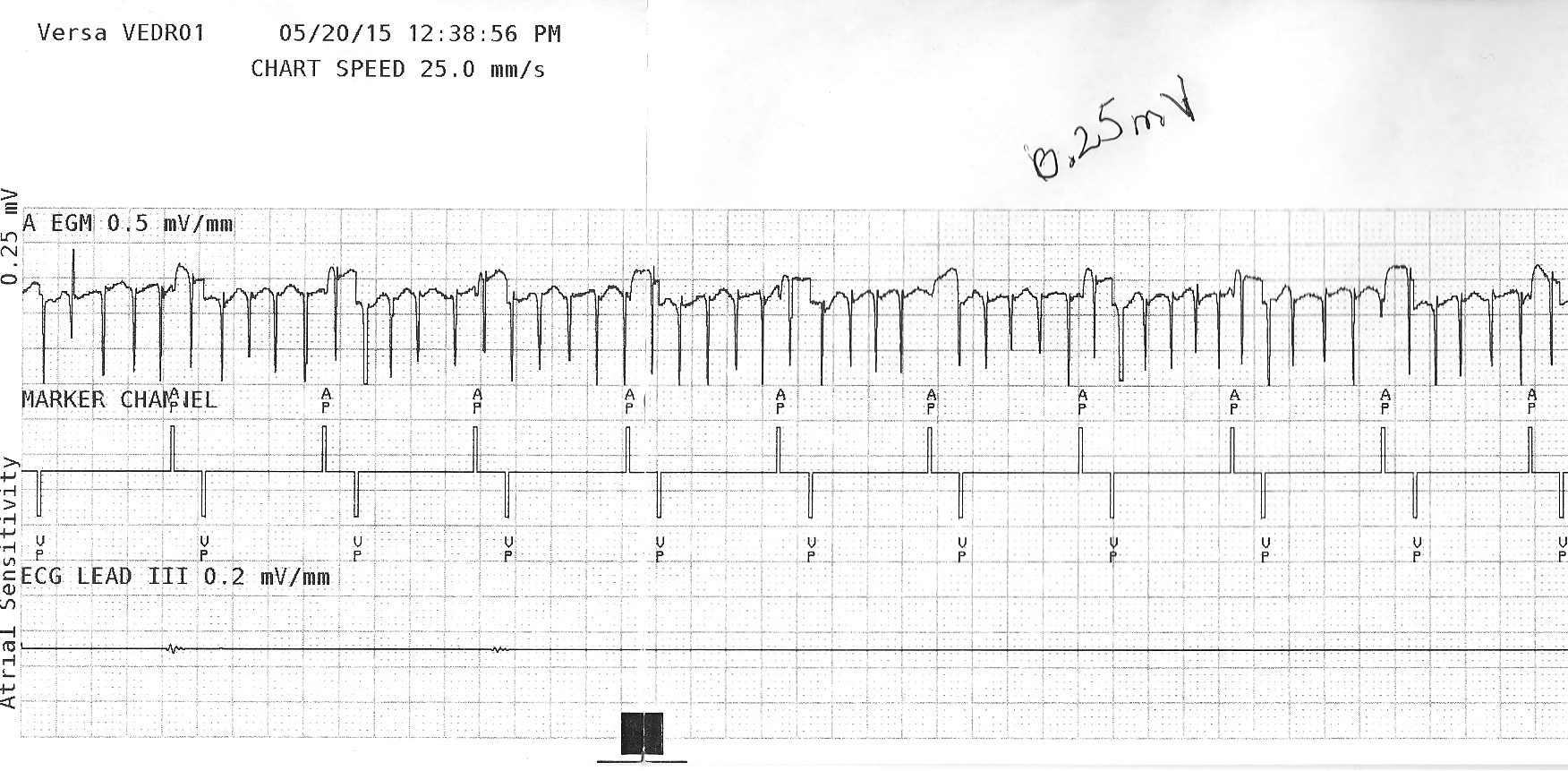 |
| (Click image to enlarge) |
Even a more sensitive setting of 0.18 mV showed similar results:
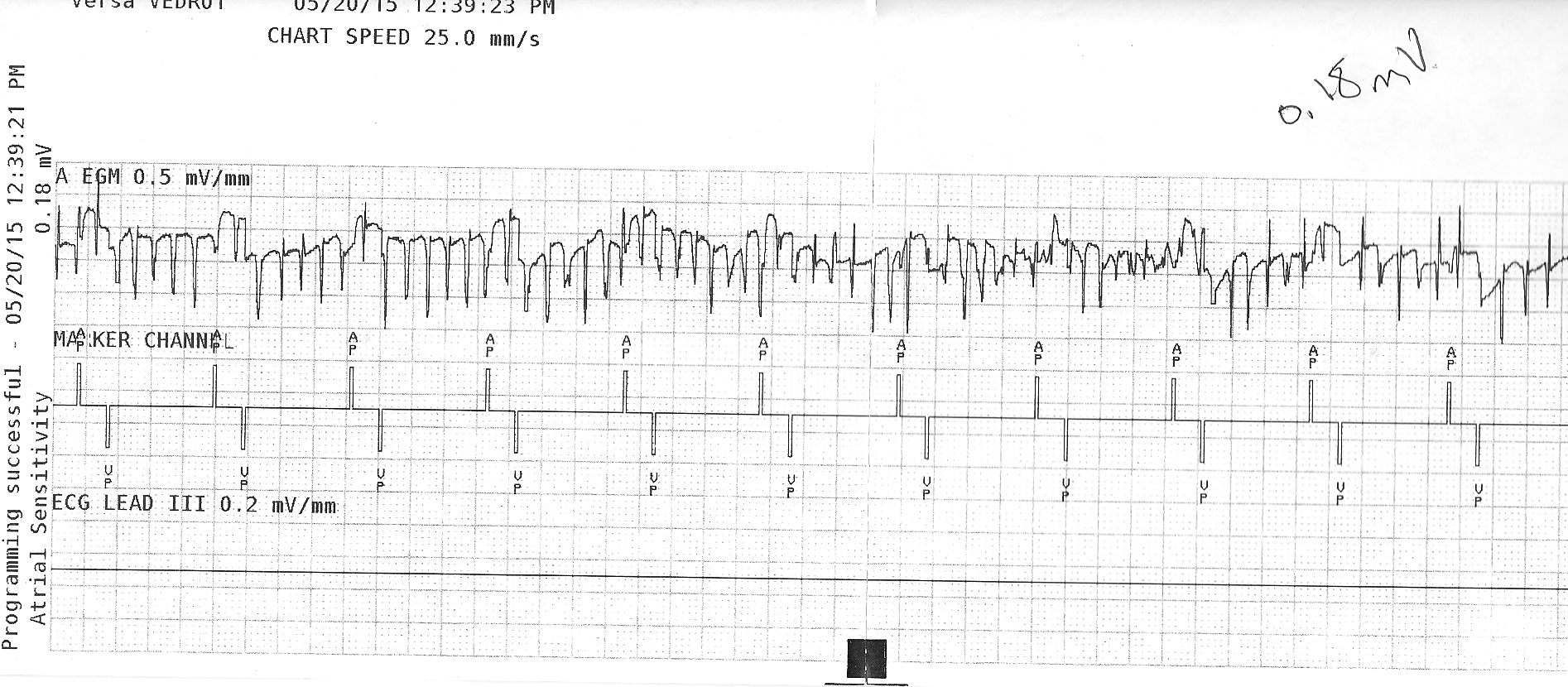 |
| (Click image to enlarge) |
Here's her sensing at the original (less sensitive) setting of 0.5 mV. Unfortunately, occassional atrial pacing was still seen:
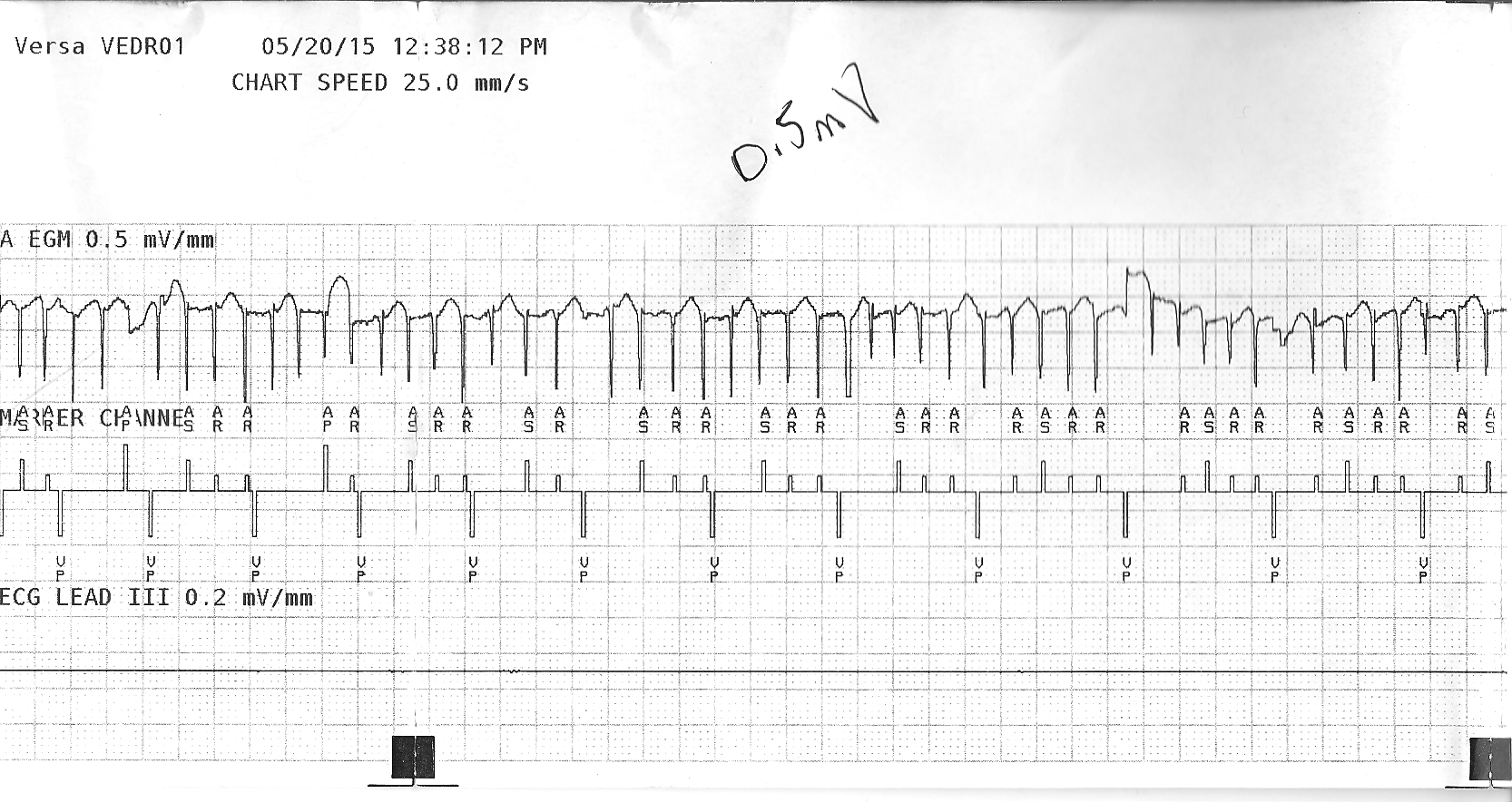 |
| (Click image to enlarge) |
Programming to an even less sensitive setting of 0.7 mV appeared to paradoxically have improved sensing of her atrial fibrillation:
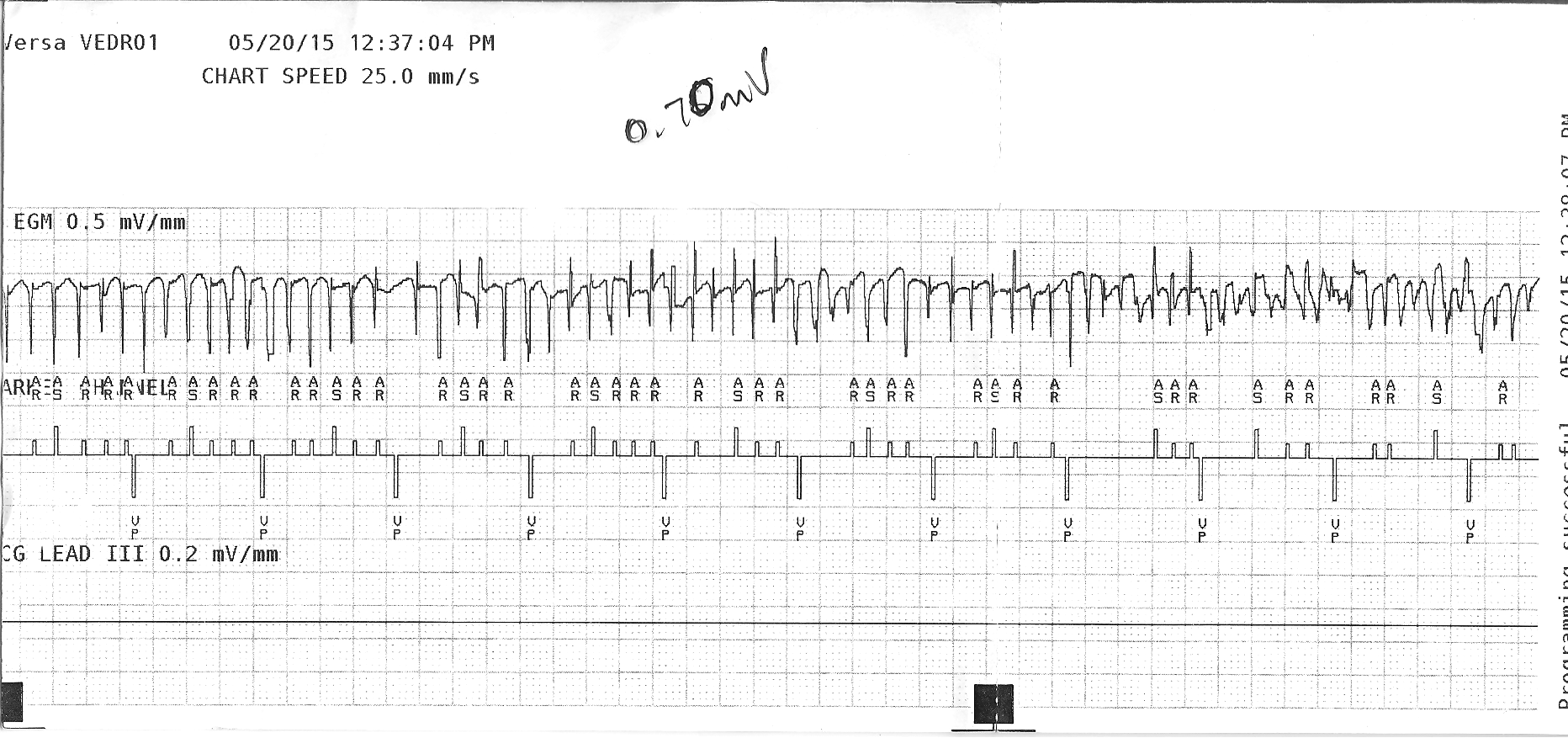 |
| (Click image to enlarge) |
How do we explain what is happening here? Would you revise her right atrial lead? If not, what atrial sensitivity setting would you use for this patient and why?
-Wes
PS: Give it your best shot to see if you can explain what is going on with this patient's atrial pacing sensitivity setting. When you finally give up and want the answer to what's going on: consider clicking here.
Apparent undersensing due to oversensing and resetting of the sensing time out circuit. I believe there must be a quiet period from the sensing amplifier. If such a quiet period does not exist, the device will not reset due to sensing although it may be truly oversensing.
ReplyDeleteLooks like noise reversion. DDIR mode considered?
ReplyDeleteCouple of questions first:
ReplyDelete1. What do the other lead parameters look like? Impedance? any noise w/manipulation? Is it bipolar or unipolar sensing ?
2. Why would you put a dual chamber pacemaker on a pt with chronic AF ?
At any rate I suspect noise reversion as above
Anony 12:51PM -
ReplyDelete1. When the patient was implanted, there was evidence of paroxysmal atrial fibrillation, hence why the atrial lead was incuded in this patient. When the device was checked, the other atrial lead parameters, including impedances, were completely stable and normal. No noise was seen with manipulation of the pacemaker generator or patient's arm with manipulation. All sensing was bipolar. (These printouts were not included for brevity).
As discussed by "Toby," the finding appeared to be a paradoxical undersensing due to lack of a Medtronic "quiet timer" sensing period timing out and was corrected by increasing the sensivitiy setting of the atrial lead. Whether this phenomenon might be seen with other manufacturers' pacemakers is unknown to me. In fact, while mentioned in one case report, it is not a common finding and was unique to me when I saw it - hence why I included these findings/possible etiology for this phenomenon here.
Of note, when seen in follow-up, the patient was no longer experiencing palpitations and her cardiac compass showed more persistent detections of atrial fibrillation.